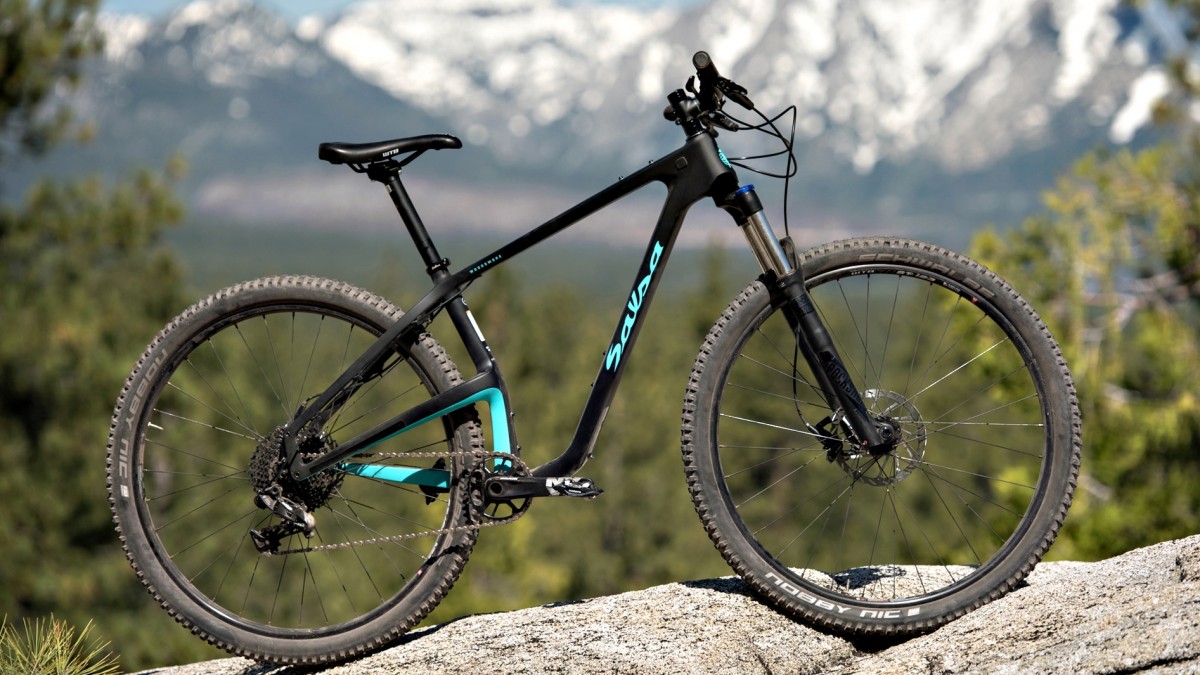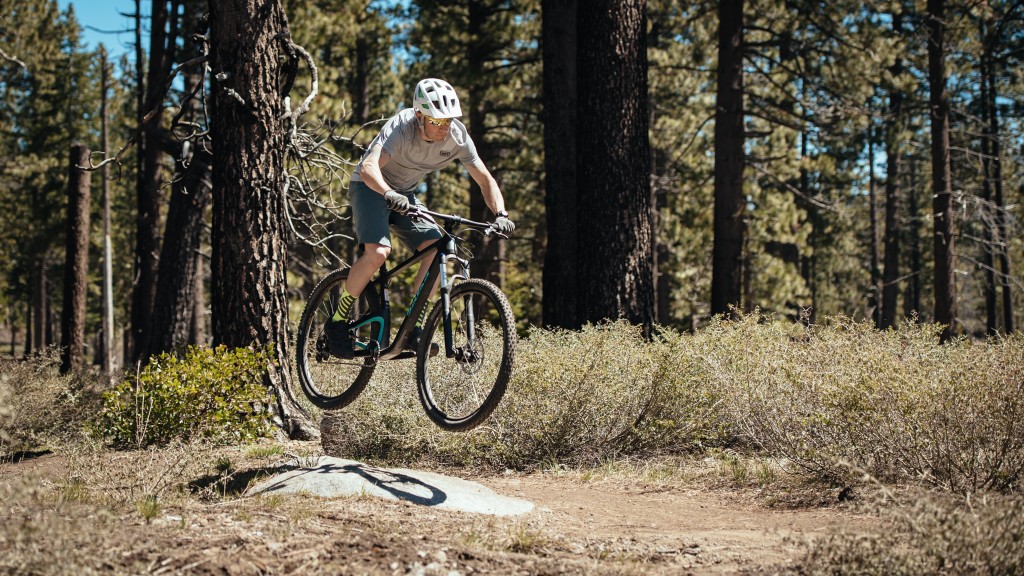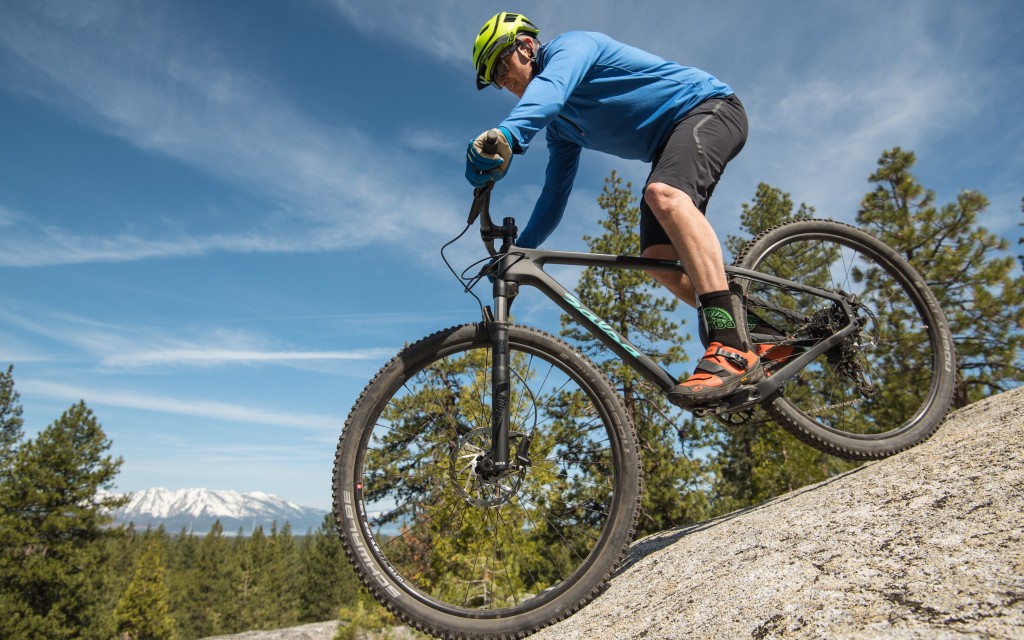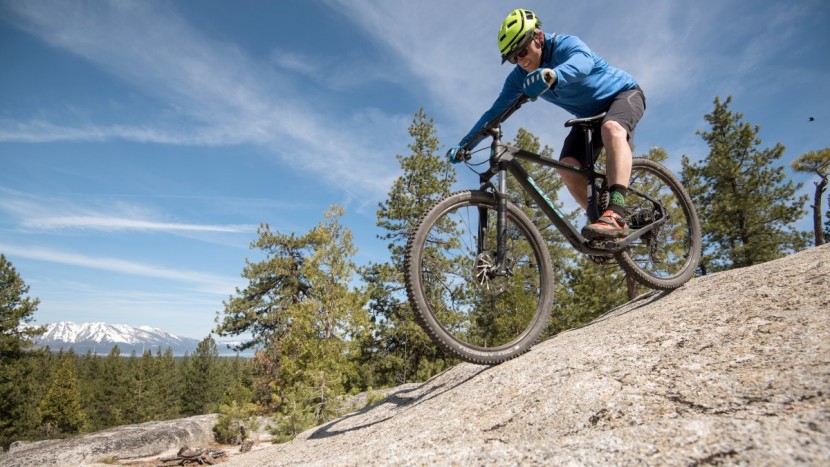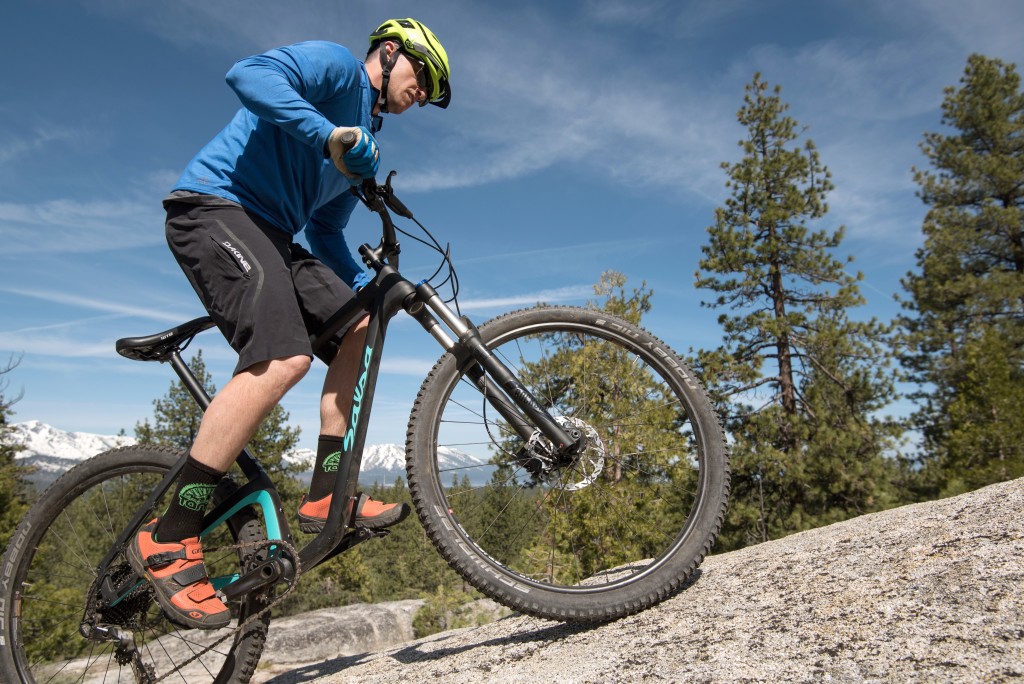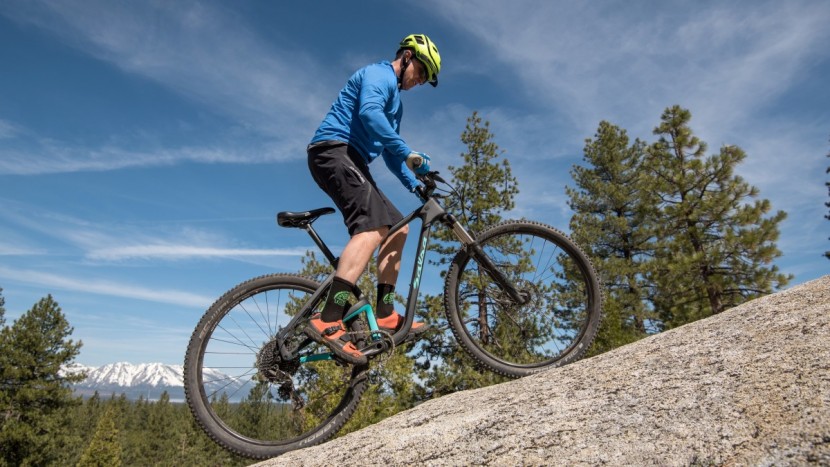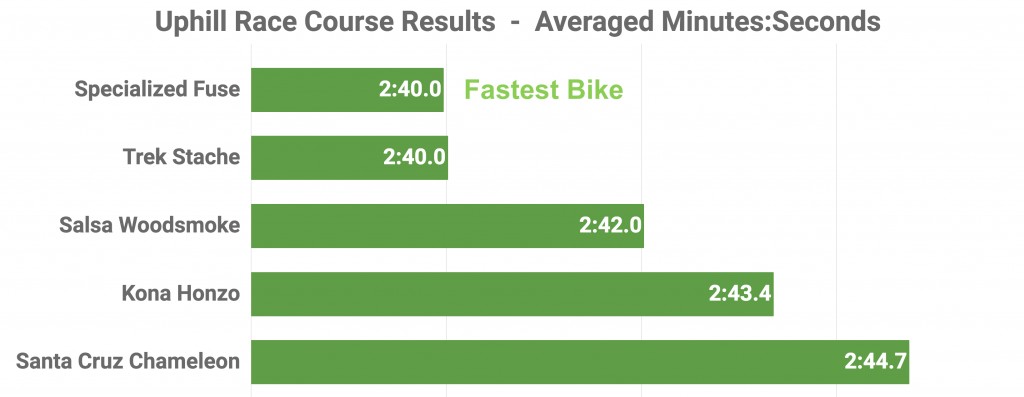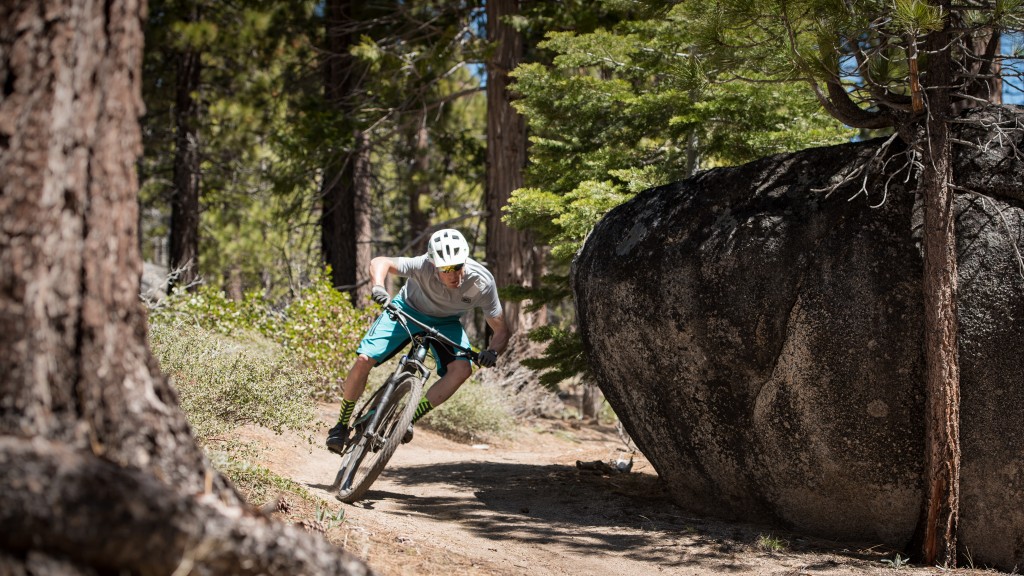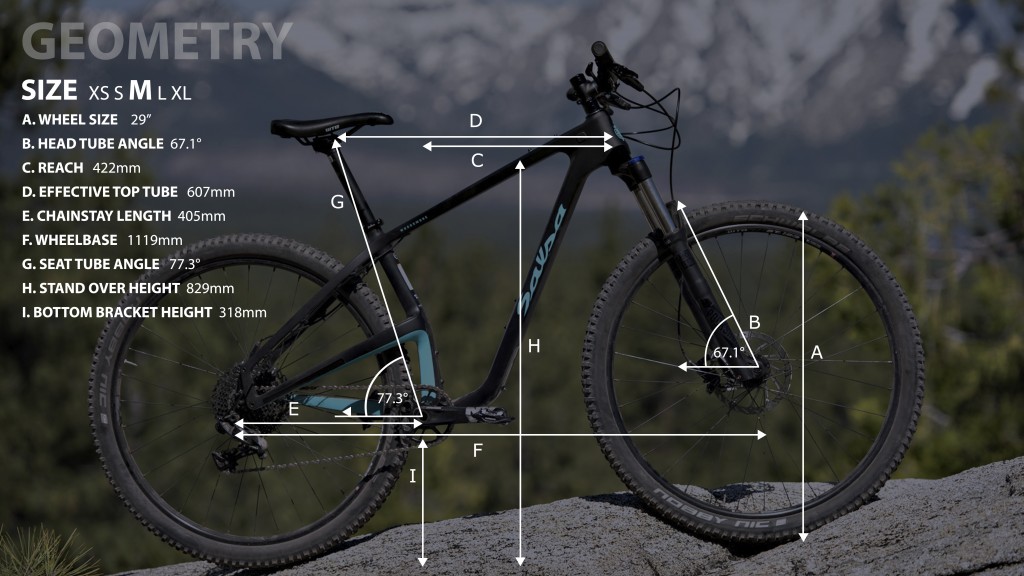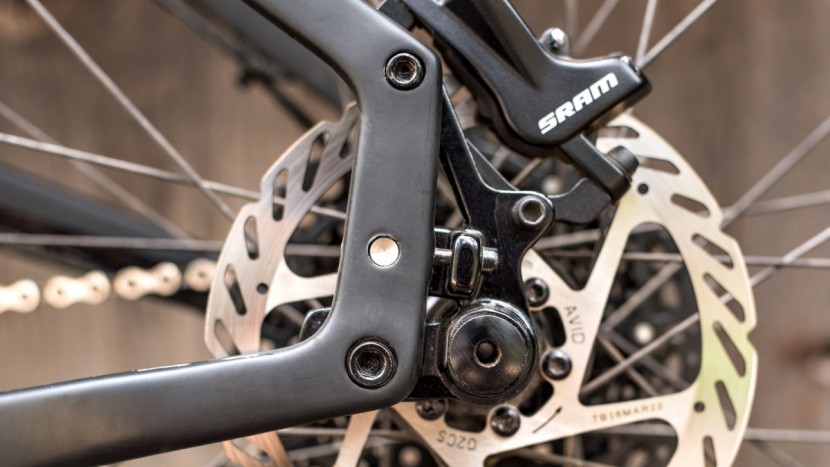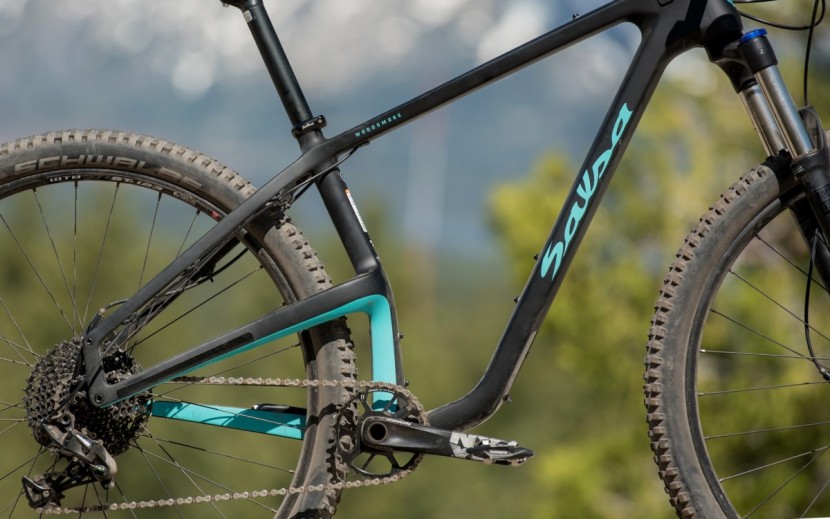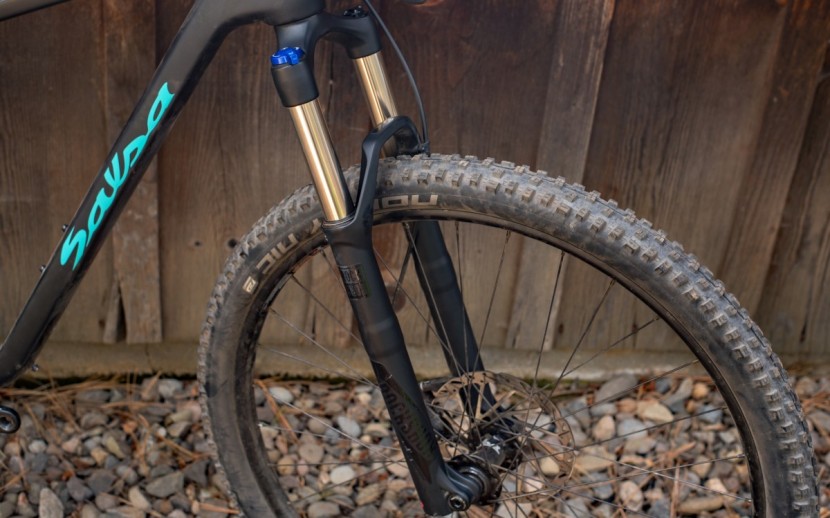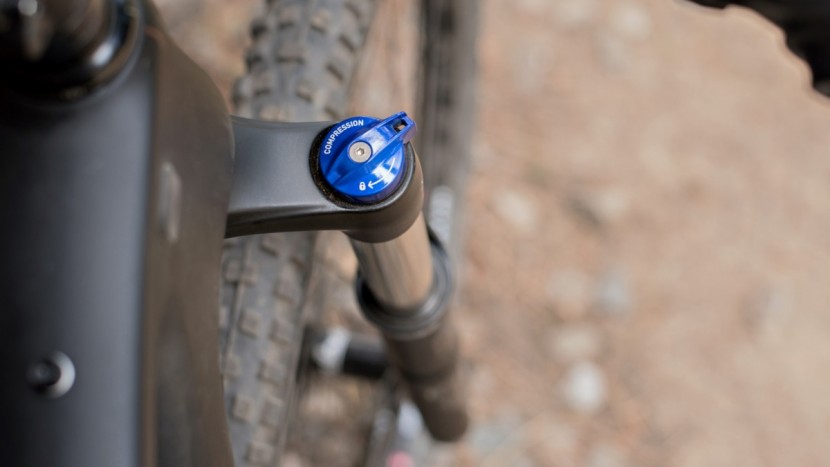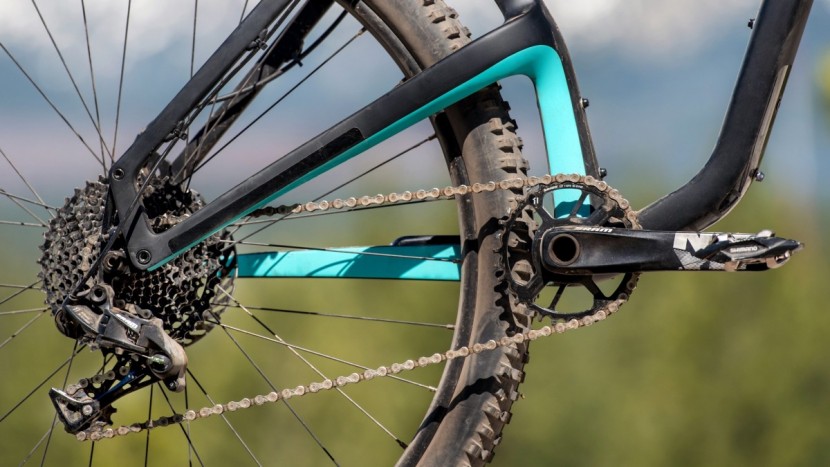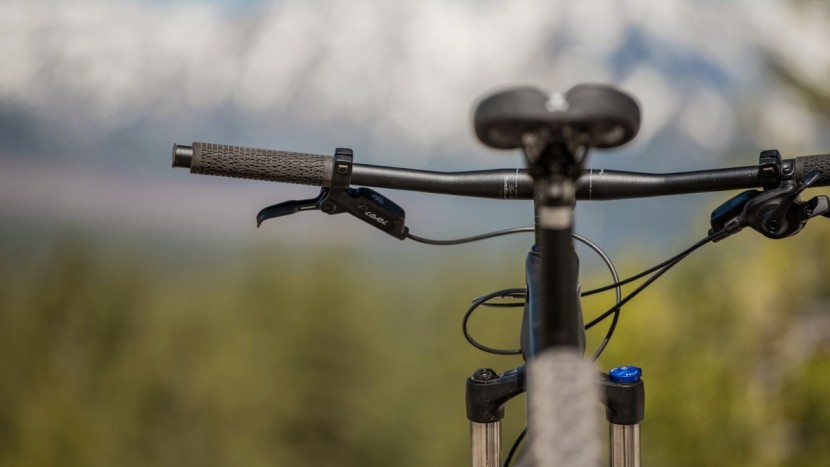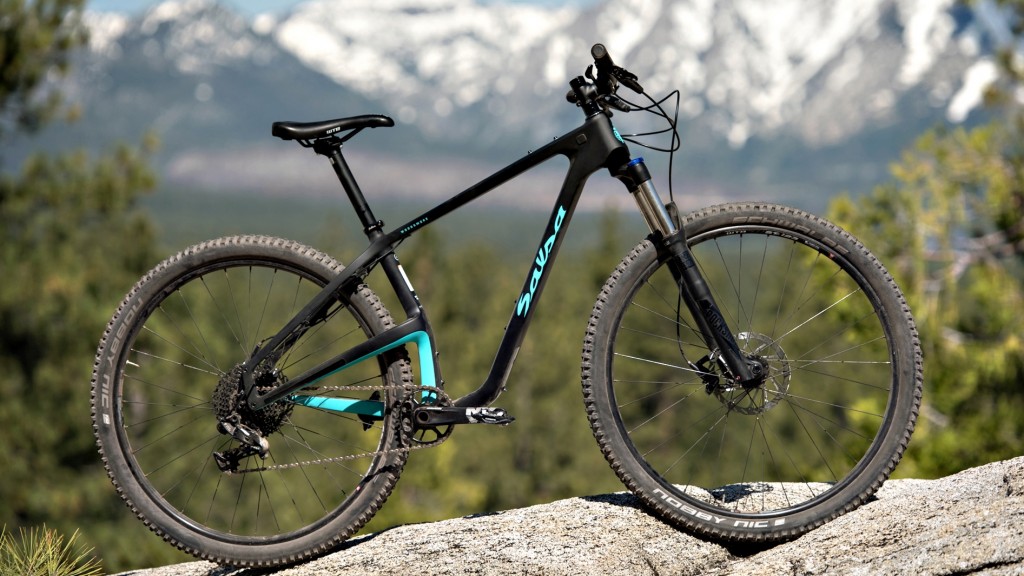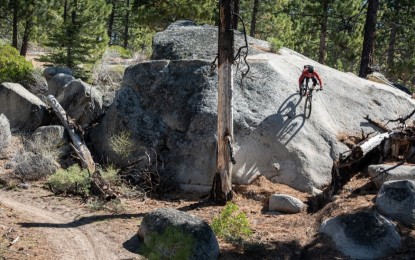The Woodsmoke 29 NX1 is a passable entry-level cross-country bike for those that want to bang out smooth dirt roads rolling out to the horizon. It's also an option for anyone dead set on the weight savings of carbon, though this low grade set up didn't give us the lively feel typical attributed to the fiber.
Salsa Woodsmoke 29 NX1 2017 Review
Our Verdict
The Woodsmoke 29 NX1 is a passable entry-level cross-country bike for those that want to bang out smooth dirt roads rolling out to the horizon. It's also an option for anyone dead set on the weight savings of carbon, though this low grade set up didn't give us the lively feel typical attributed to the fiber.
Our Analysis and Test Results
The Woodsmoke frame is unchanged for 2018. There have been some minor component tweaks, but nothing that would heavily affect performance. October 2018.
Analysis and Test Results
Four testers rode five hardtail bikes head to head for six weeks, testing the Salsa Woodsmoke 29 NX1 against the fast and innovative 2017 Trek Stache 7, uber fun and super capable 2017 Specialized Fuse Expert 6Fattie, accurately named 2017 Santa Cruz Chameleon R1+, and the efficient 2017 Kona Honzo AL/DL. Then, we rated their fun factor (weighted at 25%) and build quality (15%) as well as their downhill, climbing, and cornering skills (weighted at 20% each). The Woodsmoke earned a 49 out of 100. Find out why below.
Fun Factor
It has two wheels, so you're guaranteed 10-year-old levels of glee on the Woodsmoke. However, the Woodsmoke feels like an uncomfortable cross-country hardtail with a bad build. Its fun factor is more in line with bike packing adventure than with fast-paced trail smashing.
It is a light bike, the lightest in the test, weighing in at just 27 pounds, 11 ounces. That lends it a feathery feel, requiring less energy to get over obstacles than some of the other bikes in the test. Lower quality tires don't offer enough traction for confidence-inspiring handling. The resulting twitchy steering keeps you too busy to feel inspired to pop around on trail features. This keeps the Woodsmoke's trail manners business-minded.
The Woodsmoke just can't stand up to the fun levels offered up by the other bikes in the test on singletrack. One tester said it wasn't fun at all. The others admitted it's about as much fun as riding a bike. That said, strapping a bunch of gear to the frame and heading for the hills for an adventure sounds pretty rad. It's a more appropriate Type II fun for the Woodsmoke, which isn't well suited to partying on singletrack. The Woodsmoke rated a 5 of 10 for fun factor. The Specialized Fuse won the category with a 9.
Downhill Performance
The Woodsmoke is light and quick handling, but it lacks traction, balanced geometry, and an adequate fork. As a result, its light nature translates to a twitchy, skittish and unbalanced ride. With a better build — particularly some wider, beefier tires and a dropper post — the experience would improve markedly. Some of the test bikes overcome such build induced setbacks to perform admirably. The Woodsmoke is not one of them.
The Woodsmoke's cross-country feel is partially due it's saddle height, which is hard to move around without a dropper post. All of our testers have a hard time finding the balance point for descents. One tester consistently feels like he's going to get tossed over the bars when headed downhill. Aside from the rigid seat post being in the way, he thought it was a head tube angle and geometry problem. However, we measured the Woodsmoke's headtube angle as the slackest in the test at 67.1-degrees. The flimsy fork is the more likely culprit.
The 120mm travel RockShox Recon RC did little to smooth out the ride. It's is difficult to set up correctly. After dialing in his sag setting, one of our testers still found the fork diving with braking forces and bottoming out on side jumps. If he added more air, it was too stiff to function correctly. There wasn't enough adjustment available to tune this issue out. The fork did not feel good for any of our testers.
The 29 x 2.25" Schwalbe Nobby Nic are wrapped around narrow rims with a 23mm inner diameter and offer minimal traction. They don't absorb harsh rock hits like the plus-bikes, or even as well as the 29 x 2.3" Maxxis Minion DHF and 2.25-inch Maxxis Ardent on the Kona Honzo. They respond quickly to the handlebars but aren't capable of holding your line.
All in all, the Woodsmoke's handling never feels secure, especially at speed. Unfortunately, the tires don't have enough tread to enforce the brakes. The Woodsmoke takes a big hit in the downhill rankings, earning a 4 of 10 to the winning Fuse's 10 of 10.
Climbing Performance
The Woodsmoke climbs reasonably, handling sharply at slower, uphill speeds and pedals better than a few test bikes. Its rear end gets bounced offline easily, making it a lot of work to stay on track where other bikes would just plow through. The lack of traction certainly doesn't lend the bike a spritely feel.
The Woodsmoke pedaling is efficient, but it's not as good as we want it to be for such a cross-country feeling bike. On the flats, it's a pleasant pedaler, but when the bike turns uphill its efficiency seems to get lost somewhere in the rear triangle. One tester describes a strange vague or soggy feeling in the rear of the bike, almost like the energy you lose into a fat tire while climbing. We feel a little flex in the back of the frame. It is visible when standing next to the bike and applying horizontal pressure to the rear pedals. Still, it's good enough to finish in third place on our climbing time trails.
The bike does not hold speed through a turn due to its traction issues. It doesn't pick up many points for accelerating quickly after a momentum-killing turn or technical stretch either. Again, this is linked to traction, or the lack thereof. You're not transferring a lot of power into forward motion if your tires are frequently spinning out on the hardpack trail. Once you do get it up to speed it doesn't hold it. The narrow tires get hung up on small rocks and roots along the way, forcing you to just keep spinning.
The bike handles well from the saddle but switchbacks and rocky stretches require a fair bit of movement to weight the tires correctly to get them to grip. The short wheelbase needs very little input to work through tight switchbacks, but the tires can't back up your bar commands in technical sections. The Woodsmoke does its best work on the climbs. We gave it a 6 of 10. The Fuse wins the category with an 8.
Cornering, Handling, and Body Language
The Woodsmoke is more responsive than the plus bikes in the test, but it's not nearly as peppy as we want a carbon hardtail to be. We describe its quickness as sensitive, nervous and twitchy instead of snappy and precise. Jerky handling makes it feel sketchy in the corners, keeping it from being a beginner friendly bike. There is also a small lag between what you ask of the bike and what it does. One tester described it as feeling like he had a flat tire, and a few noticed some rear triangle frame flex.
Having little traction on the tires makes for loose and nervous cornering. It's the only bike in the test that has a consistent front tire slide. You even lose grip when scrubbing speed to get around a corner. On the downhill turns, it feels like a barebones cross-country ride, requiring a lot of body language to get behind the rigid seat post to avoid getting tossed over the bars.
While the body positioning is more stretched out than other bikes in the test, it's still fairly upright and certainly more relaxed than a straight-up XC race bike. Still, the other test bikes feel more neutral. You have to work to see what you can do with the Woodsmoke. The other bikes just do the work for you. Several of our testers never got comfortable on this bike, feeling like they were constantly searching for the right positioning. We rate the Woodsmoke a 5 of 10 for cornering. The Fuse wins the category with a 9.
Frame Design
The Woodsmoke has adjustable rear dropouts, which Salsa refers to as alternator 2.0 dropouts. These let you run the Woodsmoke as a single speed or geared weapon. They also allow you to increase or decrease the wheelbase length, claiming increased stability with longer chainstays and easier maneuverability with shorter stays. We tested it in its longest chainstay setting.
The Woodsmoke 29 NX1's carbon frame holds its 120mm RockShox Recon Silver RC fork at the slackest head tube angle in the test, measured at 67.1-degrees. The Woodsmoke's geometry features a short top tube (607mm), steep seat tube angle (77.3-degrees), and tidy wheelbase (measured at 1119mm). It also has the shortest chainstays in the test by far, measured at 405mm in the longest dropout position.
This setup is very similar to the Trek Stache except the Woodsmoke isn't nearly as tall. It has a bracket height of 318mm, which is more in line with the Specialized Fuse. Internal cable routing keeps the lines on its sleek black frame uncluttered, but three water bottle cage mounts can fix that aesthetic in a hurry. One appears on top of the top tube, a dangerous location in the case of panicked, off-balance slamming of the brakes. Great for water carrying capacity.
Build
The tradeoff for a carbon frame at this price point is a bottom-shelf build. We'd prefer an aluminum frame and higher quality build.
Cockpit and Fit — The cockpit has the most cross-country feel in the test but it's still pretty comfortable and fits like a true medium.
Fork — The 120mm travel RockShox Recon RC Boosted 27.5+/29 fork is a low-end option. It lacked enough adjustability to balance small bump compliance with proper ramp up to prevent bottoming out.
Wheels and Tires — The 29 x 2.25" Schwalbe Nobby Nic tires are narrow on those WTB STP rims, with a 23mm inner diameter. There are 32 spokes connecting the rims to Boosted hubs, which are Salsa branded and feature sealed bearings. We find the hubs slow to engage.
Groupset — The SRAM NX 11-Speed drivetrain is functional, but it's lower quality than the GX on the Trek Stache and the Specialized Fuse. The 32-tooth SRAM NX crankset pairs functionally with the Sunrace 11x42-tooth cassette to provide a wide range of gears.
The SRAM Level brakes come with Avid 6-bolt rotors, 180mm in the front and 160mm in the back. They sound awful heading downhill, and the tires can't enforce their action dependably. It's a little terrifying.
Handlebars, Seat and Seatpost — The Salsa Rustler 760mm handlebars work well. The Salsa Backcountry grips are ridiculous, with no locking collar they slide around on the bars at will. The Zoom rigid seatpost is cheap and heavy but fine. Optional internal cable routing begs for a dropper post. The saddle works.
The Woodsmoke gets a 4 for build kit. The Fuse pulls a 9 of 10.
Build Options
At $1,999 the Woodsmoke 29 NX1 is this frame's only non-plus-tire build option. There are two builds with 29+ wheels and two with 27.5+ wheels. Here are the highlights:
For $2,999, the Woodsmoke 29+ GX1 has a 120mm travel RockShox Yari RC fork, which we didn't love on the Kona Honzo. It also comes with an upgraded drivetrain, SRAM GX, Salsa wheels and WTB Ranger 29 x 3.0" tires.
The 29+ X01 gets a 120mm travel RockShox Pike RC fork, SRAM X01 drivetrain, and SRAM Guide RS brakes. It has the same wheelset and tires as the 29+ GX1 build. That'll run you $3,999.
The 27.5+ GX1 and X01 builds are identical to their 29+ counterparts but without the extra 1.5 inches of wheel.
Value
It's a transformer of a bike and you're buying a lot of options when you throw down for the Salsa Woodsmoke — 29+, 29, 27.5+ and single speed or geared. That said, at $1999, you're getting little more than a carbon frame that is ready to ride on only the mellowest of trails. The Woodsmoke doesn't make sense as a trail bike until you get into the $2,999, 29+ or 27.5+ version.
Suggested Upgrades
Switching the wheels and tires out to 27.5+ or 29+ versions would go a long way toward making the ride more comfortable and confident. A dropper post wouldn't hurt either.
Conclusion
While it's a candidate for a cross-country crank-a-thon, the Salsa Woodsmoke is easy to rattle in rough terrain. Between this lack of confidence and its tires' lack of traction, the bike is limited to beginner terrain or buffed out single track.


